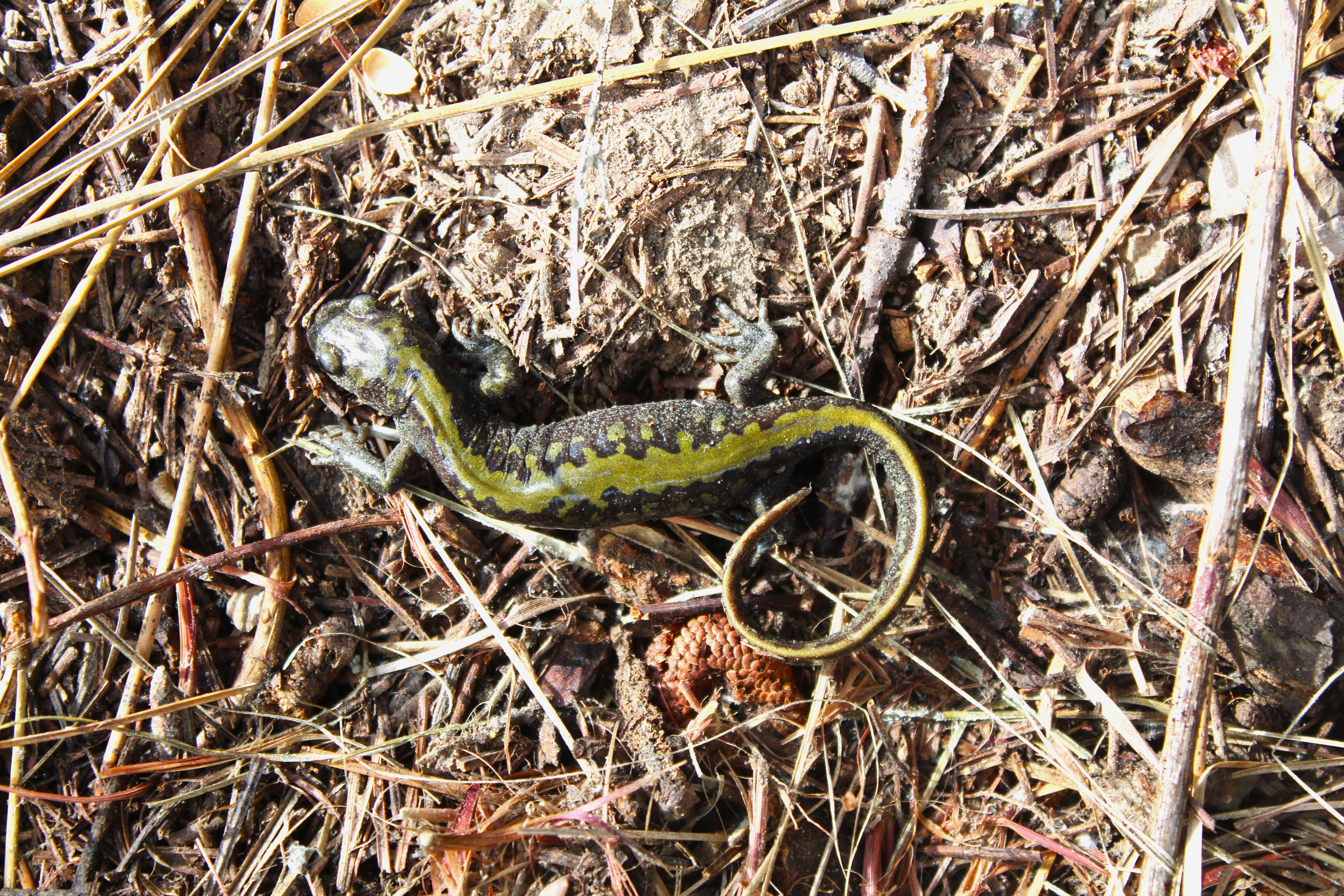Take Pause with Tiny Nature: The Long-toed Salamander
May 2, 2025
May 2, 2025
By Rose Macaulay, Stewardship Director
As winter slowly releases its grasp on the Little Spokane River Valley and the soils and duff begin to thaw, so too does one of our many native, amphibious friends: the Long-toed Salamander.
His little heart thumps a bit faster now, warmer and ready for movement. His tail is thin after a long winter of brumation, a state of sluggishness or inactivity exhibited by reptiles during cooler months. His kin awaken as he does and quickly disperse. They’ve all got cabin fever after being cooped up in their underground dwelling for so many months.
His green back arches out of the dirt, colored like fresh moss after a good rain. It’s as if he’s encouraging the budding plants to open their leaves and join him in his verdancy. His underside, is like a starry night sky: dark and speckled with thousands of fine white dots that form galaxy-like swirls on his soft belly. His long toes stretch in the warming spring air.
The Long-toed Salamander is common in Washington and northern Idaho. A highly adaptable species of mole salamander, it can live in a wide variety of habitats from coastal rainforests to sagebrush plains to alpine meadows. All they need is a secluded place with a little water and an old rodent burrow in which to take shelter in. As waters begin to warm, these salamanders will feed on insect larvae found in puddles, reducing the overabundance of pests like mosquitoes. Throughout the spring, they will mate and lay eggs, large orbs of jelly suspended in still water close to shore. Salamanders, like many amphibians, are indicators of ecosystem health. If habitat health declines, so too will the population of salamanders.
It is up to each one of us to respect species like the Long-toed Salamander. Like all amphibians, salamanders rely on clean water, a debris-free environment, and space to roam the moist habitats of our region without stress or unnecessary handling by humans. As you spend time outside, keep your four-legged friends on a leash and pick up (and pack out) their waste to reduce physical or environmental disturbance. Remove any trash you find and give the salamanders space if you see them. Their skin is highly sensitive and must remain moist and toxin-free in order to take in oxygen. Handling them can introduce toxins, bacteria, or infection and compromise their ability to absorb oxygen through their moist skin.
As we welcome spring, we hope you’ll join us in celebrating the return of our amphibious friends, too.
